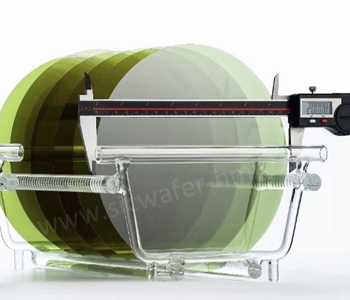
As one of global SiC Wafer Manufacturer, we produce all dimensions of SiC Substrate from 2 inch to 8 inch (50.8mm to 200mm) with high quality but very preferential price. Trusted by a lot of semiconductor companies, we guarantee on-time delivery with full traceability from crystal growth to CMP finishing. Energy transformation and artificial intelligence (AI) are the dual engines of the future technological revolution. SiC (SiC) has emerged as one of the foundational materials enabling energy transformation and AI to achieve these core goals.
Our vertically integrated production line delivers:
-
Ultra-low micropipe density (<0.2 cm²)
-
4H-SiC polytype purity >99.995%
-
Ra surface roughness ≤0.2nm
Power semiconductor devices are components used as switches or rectifiers in power electronics. These devices primarily include power diodes, power transistors, thyristors, MOSFETs, and IGBTs.


Applications of SiC in Other Emerging Fields
※ AI Eyewear Optical Waveguides
For the optical systems of AI eyewear,SiC-based Surface Relief Grating (SRG) waveguides represent a revolutionary innovation. SiC boasts high refractive index, wide field of view (FOV), and full-color integration capabilities. Notably, SiC's exceptional refractive index (2.6 to 2.7) enables single-layer integration of RGB color channels, effectively addressing the rainbow effect. Compared to traditional multi-layer solutions, this significantly reduces the weight, thickness, and production complexity of the devices. This advancement makes SiC SRG waveguides the optimal choice for next-generation AR displays that prioritize compact form factors and immersive visual experiences. As AI eyewear gradually evolves into a mainstream wearable computing platform, the potential market size for SiC-based SRG waveguides in the global AI eyewear market is projected to exceed 60 million units by 2030.
※ Thermal Management Components
SiC is widely used in thermal management and heat sink applications, including semiconductors, thermal management systems, 5G communications, high-power LED lighting, electric vehicles, and renewable energy systems, due to its high thermal conductivity, low thermal expansion coefficient, high hardness, chemical stability, and lightweight properties. It enhances the operational efficiency and reliability of devices, reduces the weight of thermal management systems, and extends the lifespan of equipment. Compared to traditional thermal management materials such as copper and aluminum nitride, SiC's thermal conductivity is 1.2 times that of copper and over twice that of aluminum nitride, making it more suitable for scenarios requiring rapid heat dissipation to protect sensitive electronic components or maintain stable operation in high-power-density devices. For example, in high-power laser applications, SiC can be used to manufacture heat sinks designed to dissipate heat from heat-generating objects, replacing other traditional materials. It is estimated that the total potential demand for SiC heat sinks in high-power laser applications could exceed 35 million units by 2030.